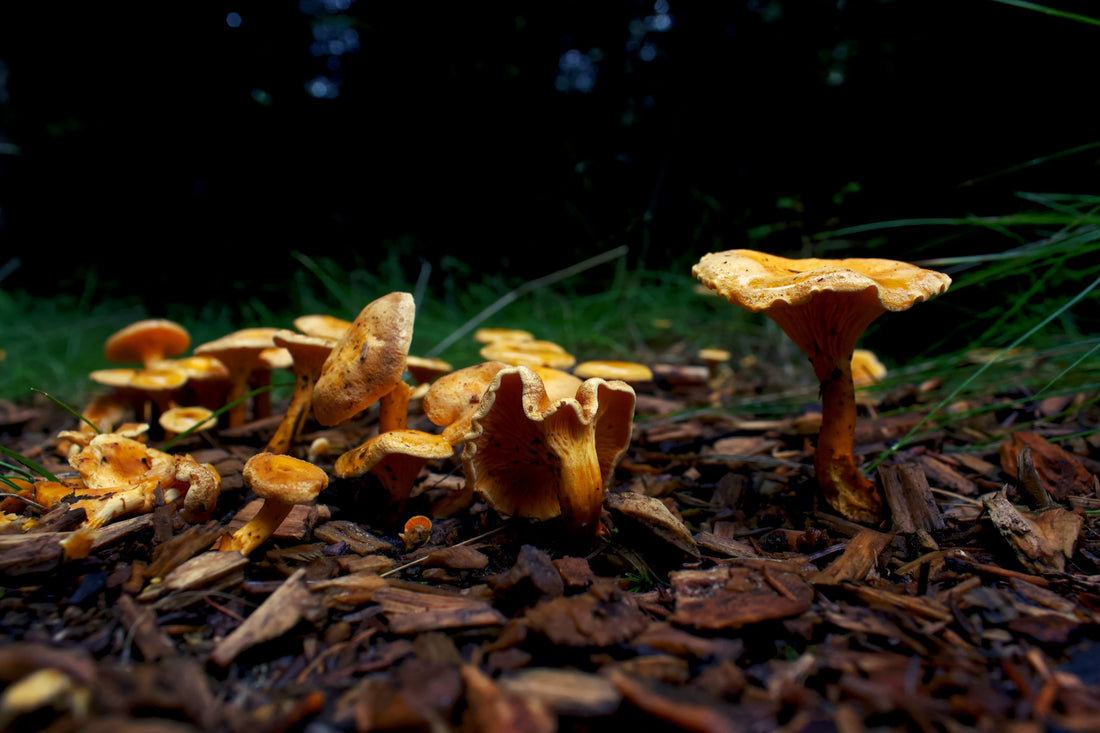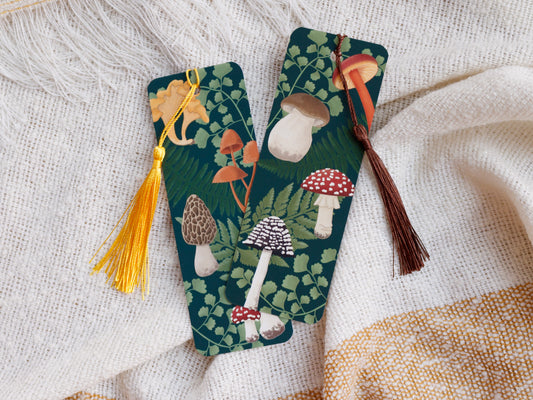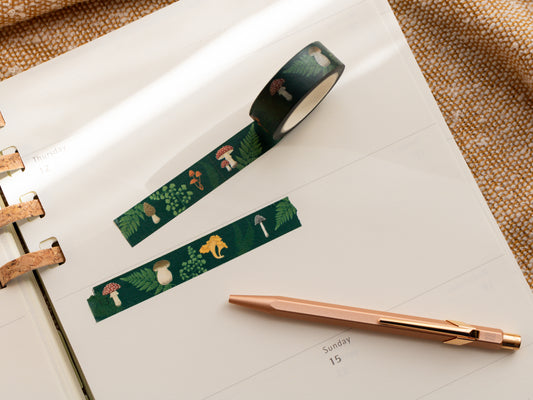
Chanterelles are some of the most sought after mushrooms in the culinary world due to their delicious flavour and succulent texture. Since they can only be foraged and not commercially farmed, they can be quite expensive and have been a symbol of wealth since the 16th century.
Chanterelles are typically found on the forest floor, often in association with certain tree species such as birch, oak, pine, or beech. It is important to correctly identify chanterelle mushrooms to not confuse them with their toxic look-alikes such as Jack-o-Lantern Mushrooms, False Chanterelles or Wooly Chanterelles.
Chanterelle Identification Checklist
- Colour: Bright yellow, orange, or red
- Cap: The cap of a Chanterelle is typically 2 to 10cm (0.8 to 4 inches) in diameter and is funnel-shaped or somewhat vase-like. A chanterelle’s cap is smooth, soft, and may feel moist. It should give a little when you squish it but not disintegrate completely in your hands.
- False gills (Ridges): Chanterelles appear gilled, but don’t be fooled. They have false gills that do not fan or separate like true gills. They are more like ridges and may be wavy, straight, forked, or woven. They cover the underside of the cap and may extend downward, covering the top or middle parts of the stalk. The colour of the ridges matches or is slightly paler than the cap.
- Lobed margins: The margins curl down as the mushroom grows and eventually become lobed.
- Stem: The stem of a Chanterelle is the same colour as or somewhat paler than the cap, merging into the cap. The stalk is usually short and may appear curved or bulge slightly on the bottom.
- Flesh: Chanterelle flesh is very pale or snow-white. Stems are solid, not hollow.
- Fruity aroma: Chanterelles often have a pleasant fruity or apricot-like aroma, which can be helpful in distinguishing them from other mushrooms.
- Spores: The spore print is yellowish.

Where To Find Chanterelle Mushrooms
Chanterelles are common but localised in the UK and can typically be found from June to December. They are mycorrhizal fungi which means they form a symbiotic relationship with plants’ root systems. Unlike decomposing saprobic fungi, such as the Common Puffball, mycorrhizal fungi do not grow directly on another plant. So, if you think you see chanterelles on a log, you might look at a poisonous look-alike.
Look to the ground instead. You’ll find them in old-growth hardwood forests at the base of living, healthy trees. Oak, pine, poplar, and birch are among their favourites. Some chanterelles may sprout from moss, while others poke their heads up between fallen leaves. It’s common to see them clustered along trails beneath shady branches, but they may also grow alone.
Chanterelles often show up after heavy rains, followed by long periods of high humidity and steady heat. It seems that the hotter and wetter it is, the faster chanterelles will grow. Their reliance on the weather means they can be fickle, taking anywhere from a few days to several weeks to reach maturity.
Uses Of Chanterelle Mushrooms
Chanterelles are eaten widely and are considered a gourmet fungus. They also have medicinal qualities, particularly antibacterial and antiviral properties and contain eight essential amino acids. They also have antioxidant properties and contain compounds that help with improving liver function, reducing cholesterol levels, treating thrombosis, and fighting cancer-causing agents. In conclusion: Chanterelles are not only a delicious but also healthy food choice.

Sources:
https://en.wikipedia.org/wiki/Cantharellus_cibarius
https://www.primalsurvivor.net/chanterelle-mushrooms/
https://www.woodlandtrust.org.uk/trees-woods-and-wildlife/fungi-and-lichens/chanterelle/
https://www.shroomer.com/chanterelle-mushrooms/
https://www.wildfoodie.co.uk/post/the-chanterelle-mushroom-and-false-chanterelle
https://www.reddit.com/r/Mushrooms/comments/177r00p/true_vs_false_gills_distinction/




